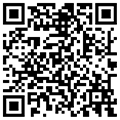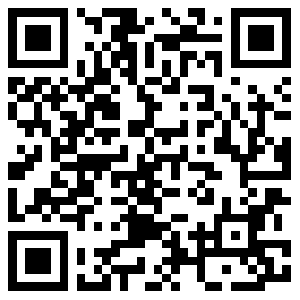刚刚发布的《2017年美国高血压指南更新》中英文对照版
2017年11月14日 17119人阅读 返回文章列表
仓促翻译,难免有误,敬请指正。
1 The 2017 guideline is an update of the “Seventh Report of the Joint National Committee on Prevention, Detection, Evaluation and Treatment of High Blood Pressure” (JNC 7), published in 2003. The 2017 guideline is a comprehensive guideline incorporating new information from studies regarding blood pressure (BP)-related risk of cardiovascular disease (CVD), ambulatory BP monitoring (ABPM), home BP monitoring (HBPM), BP thresholds to initiate antihypertensive drug treatment, BP goals of treatment, strategies to improve hypertension treatment and control, and various other important issues.
2017版的高血压指南是对JNC7的更新,是一个包含了血压相关的心血管疾病、动态血压监测、家庭自测血压的新信息,开始使用降压药物的血压升高的阈值,血压治疗的目标值、改善血压治疗和控制的方式等各种高血压领域的问题。
2 It is critical that health care providers follow the standards for accurate BP measurement. BP should be categorized as normal, elevated, or stages 1 or 2 hypertension to prevent and treat high BP. Normal BP is defined as <120/<80 mm Hg; elevated BP 120-129/<80 mm Hg; hypertension stage 1 is 130-139 or 80-89 mm Hg, and hypertension stage 2 is ≥140 or ≥90 mm Hg. Prior to labeling a person with hypertension, it is important to use an average based on ≥2 readings obtained on ≥2 occasions to estimate the individual’s level of BP. Out-of-office and self-monitoring of BP measurements are recommended to confirm the diagnosis of hypertension and for titration of BP-lowering medication, in conjunction with clinical interventions and telehealth counseling. Corresponding BPs based on site/methods are: office/clinic 140/90, HBPM 135/85, daytime ABPM 135/85, night-time ABPM 120/70, and 24-hour ABPM 130/80 mm Hg. In adults with an untreated systolic BP (SBP) >130 but <160 mm Hg or diastolic BP (DBP) >80 but <100 mm Hg, it is reasonable to screen for the presence of white coat hypertension using either daytime ABPM or HBPM prior to diagnosis of hypertension. In adults with elevated office BP (120-129/<80) but not meeting the criteria for hypertension, screening for masked hypertension with daytime ABPM or HBPM is reasonable.
健康管理者必须遵循严格的血压测量标准。根据血压的值可以分为正常、血压高值、1级或2级高血压。正常血压被定义为<120/<80 mm Hg, 120-129/<80 mm Hg为血压升高, 1级高血压为130-139 /80-89 mm Hg, 2级高血压为 ≥140 or ≥90 mm Hg。必须在不同时间测量2次,血压均升高才能诊断高血压。建议使用诊所外和家庭自测血压诊断高血压,并作为开始降压治疗的依据,并和诊所保持电话联系,并接受指导。血压测量的方式和标准参照以下的值:诊所血压140/90mm Hg, 家庭自测血压135/85mm Hg,白天动态血压平均值135/85mm Hg, 夜间动态血压平均值120/70mm Hg,24小时动态血压平均值130/80 mm Hg。未经治疗的成年人,如果收缩压>130mm Hg但 <160 mm Hg 或者 舒张压 BP >80mm Hg但 <100 mm Hg,在诊断高血压前,有必要用白天家庭自测血压或动态血压排除白大衣高血压的可能。而成年人如果诊所血压在120-129mm Hg<80mm Hg未达到高血压诊断标准者,也有必要使用白天家庭自测血压或动态血压排除隐匿性高血压的可能。
3 For an adult 45 years of age without hypertension, the 40-year risk for developing hypertension is 93% for African Americans, 92% for Hispanics, 86% for whites, and 84% for Chinese adults. In 2010, hypertension was the leading cause of death and disability-adjusted life-years worldwide, and a greater contributor to events in women and African Americans compared with whites. Often overlooked, the risk for CVD increases in a log-linear fashion; from SBP levels <115 mm Hg to >180 mm Hg, and from DBP levels <75 mm Hg to >105 mm Hg. A 20 mm Hg higher SBP and 10 mm Hg higher DBP are each associated with a doubling in the risk of death from stroke, heart disease, or other vascular disease. In persons ≥30 years of age, higher SBP and DBP are associated with increased risk for CVD, angina, myocardial infarction (MI), heart failure (HF), stroke,
peripheral arterial disease, and abdominal aortic aneurysm. SBP has consistently been associated with increased CVD risk after adjustment for, or within strata of, SBP; this is not true for DBP.
对于年龄大于45岁没有高血压者,非洲裔美国人40岁得高血压的比例为93%,西班牙裔人为92%,白种人为86%,黄种人为84%。在2010年,全世界范围内高血压作为导致死亡或致残的首要原因,非洲裔女性比白种人的贡献大。容易忽视的一点是,心血管疾病的危险成线性增长。收缩压从 <115 mm Hg 到>180 mm Hg, 和舒张压 DBP 从 <75 mm Hg 到 >105 mm Hg,收缩压每升高 20 mm Hg 和舒张压每升高10 mm Hg ,卒中、心脏病和其他血管病的死亡风险增加2倍。大于30岁的成年人,高收缩压和舒张压增加心血管疾病、心绞痛、心肌梗死、心力衰竭、外周动脉疾病和腹主动脉瘤的风险。收缩压升高不同于舒张压升高,收缩压升高在调整了其他危险因素后,仍然增加心血管疾病的风险。
4 It is important to screen for and manage other CVD risk factors in adults with hypertension: smoking, diabetes, dyslipidemia, excessive weight, low fitness, unhealthy diet, psychosocial stress, and sleep apnea. Basic testing for primary hypertension includes fasting blood glucose, complete blood cell count, lipids, basic metabolic panel, thyroid stimulating hormone, urinalysis, electrocardiogram with optional echocardiogram, uric acid, and urinary albumin-to-creatinine ratio.
对于血压升高的成年人,还要筛查出现其他心血管疾病的危险因素,比如吸烟、糖尿病、血脂异常、超重、不健康饮食、精神压力和睡眠呼吸暂停等。原发性高血压基础的检测应该包括空腹血糖、全血细胞计数、血脂、基础代谢状态、甲状腺激素水平、尿液检查、心电图、心脏超声、尿酸和尿白蛋白/肌酐比值。
5 Screening for secondary causes of hypertension is necessary for new-onset or uncontrolled hypertension in adults including drug-resistant (≥3 drugs), abrupt onset, age <30 years, excessive target organ damage (cerebral vascular disease, retinopathy, left ventricular hypertrophy, HF with preserved ejection fraction [HFpEF] and HF with reserved EF [HFrEF], coronary artery disease [CAD], chronic kidney disease [CKD], peripheral artery disease, albuminuria) or for onset of diastolic hypertension in older adults or in the presence of unprovoked or excessive hypokalemia. Screening includes testing for CKD, renovascular disease, primary aldosteronism, obstructive sleep apnea, drug-induced hypertension (nonsteroidal anti-inflammatory drugs, steroids/androgens, decongestants, caffeine, monoamine oxidase inhibitors), and alcohol-induced hypertension. If more specific clinical characteristics are present, screening for uncommon causes of secondary hypertension is indicated (pheochromocytoma, Cushing’s syndrome, congenital adrenal hyperplasia, hypothyroidism, hyperthyroidism, and aortic coarctation). Physicians are advised to refer patients screening positive for these conditions to a clinician with specific expertise in the condition.
对于成年人新发的或者难以控制的高血压,包括使用三种降压药物的顽固性高血压、突然升高的高血压、年龄小于30岁,严重的靶器官受损(包括脑血管疾病、视网膜病变、左心室肥厚、左室射血分数保留的心衰、冠心病、慢性肾脏病、外周血管疾病、蛋白尿)或者年龄大的患者,以舒张压升高为主要表现或严重低血钾的患者,需要进一步排除继发性高血压的可能。包括慢性肾脏病的检测、肾血管疾病、原发性醛固酮升高、睡眠呼吸暂停综合征、药物相关性高血压(包括非甾体类消炎药、激素、减充血剂、咖啡因、单氨氧化酶抑制剂)和酒精诱导的高血压。如果有其他特殊的临床表现,对于一些非常见的原因也需要排除(比如嗜铬细胞瘤、库欣综合征、先天性肾上腺增生、甲状腺功能减退和甲状腺功能亢进和主动脉夹层)。全科医生应该建议此类患者在高血压专科医生的指导下做相应疾病的筛查。
6 Nonpharmacologic interventions to reduce BP include: weight loss for overweight or obese patients with a heart healthy diet, sodium restriction, and potassium supplementation within the diet; and increased physical activity with a structured exercise program. Men should be limited to no more than 2 and women no more than 1 standard alcohol drink(s) per day. The usual impact of each lifestyle change is a 4-5 mm Hg decrease in SBP and 2-4 mm Hg decrease in DBP; but diet low in sodium, saturated fat, and total fat and increase in fruits, vegetables, and grains may decrease SBP by approximately 11 mm Hg.
非药物干预降低血压的方法有:超重或肥胖患者通过健康饮食、限盐、富钾食物来减体重;有计划地增加运动量。应该限制每天饮酒量,男性不超过2个标准的酒精量,女性不超过1个标准的酒精量。常规的每一项改善生活方式的举措可以降低收缩压4-5mmHg,舒张压2-4mmHg。但是如果低盐饮食、低饱和脂肪酸和全脂肪饮食、增加蔬菜、水果和谷物可以降低收缩压大约11mmHg。
7 The benefit of pharmacologic treatment for BP reduction is related to atherosclerotic CVD (ASCVD) risk. For a given magnitude reduction of BP, fewer individuals with high ASCVD risk would need to be treated to prevent a CVD event (i.e., lower number needed to treat) such as in older persons, those with coronary disease, diabetes, hyperlipidemia, smokers, and CKD. Use of BP-lowering medications is recommended for secondary prevention of recurrent CVD events in patients with clinical CVD and an average SBP ≥130 mm Hg or a DBP ≥80 mm Hg, or for primary prevention in adults with no history of CVD but with an estimated 10-year ASCVD risk of ≥10% and SBP ≥130 mm Hg or DBP ≥80 mm Hg. Use of BP-lowering medication is also recommended for primary prevention of CVD in adults with no history of CVD and with an estimated 10-year ASCVD risk <10% and a SBP ≥140 mm Hg or a DBP ≥90 mm Hg.
药物降低血压的益处在于降低动脉粥样硬化性心血管疾病的发生。如果血压能在指定范围内大幅度下降,动脉粥样硬化性心脏病高危的患者很少需要其他的治疗来预防心血管事件(也就是更少的心血管疾病高危患者需要治疗),尤其是老年有冠心病、糖尿病、血脂异常、吸烟和慢性肾脏疾病的患者。有临床心血管疾病的患者如果平均收缩压≥130 mm Hg 或舒张压 ≥80 mm Hg需要使用降压药物作为预防心血管疾病的二级预防,对于没有心血管疾病但动脉粥样硬化心血管疾病的10年风险≥10%的患者,如果平均收缩压≥130 mm Hg 或舒张压 ≥80 mm Hg,需要使用降压药物作为心血管疾病的一级预防。在没有心血管疾病,但动脉粥样硬化心血管疾病的10年风险≥10%的患者,如果平均收缩压≥140 mm Hg 或舒张压 ≥90 mm Hg,推荐使用降压药物作为一级预防。
The prevalence of hypertension is lower in women compared with men until about the fifth decade, but is higher later in life. While no randomized controlled trials have been powered to assess outcome specifically in women (e.g., SPRINT), other than special recommendations for management of hypertension during pregnancy, there is no evidence that the BP threshold for initiating drug treatment, the treatment target, the choice of initial antihypertensive medication, or the combination of medications for lowering BP differs for women compared with men. For adults with confirmed hypertension and known CVD or 10-year ASCVD event risk of 10% or higher, a BP target of <130/80 mm Hg is recommended. For adults with confirmed hypertension, but without additional markers of increased CVD risk, a BP target of <130/80 mm Hg is recommended as reasonable.
女性在50岁前高血压的发生率低于男性,但50岁以后高血压的发生率增加。目前没有随机对照的研究来有力评估预后,尤其是女性,除了妊娠高血压的管理有特殊建议外,目前仍然没有证据确定开始药物治疗的血压阈值、血压的目标值、选择什么药物作为初始的降压方案或联合使用降压药物在男性和女性之间的区别。对于成年人如果有明确的心血管疾病或没有心血管疾病但10年的动脉粥样硬化性心血管疾病的风险≥10%,把血压的目标值确定为<130/80 mm Hg是合理的。对于确认高血压的病人,但没有增加心血管疾病危险的其他因素,血压目标值定义为<130/80 mm Hg也是合理的。
8 Follow-up: In low-risk adults with elevated BP or stage 1 hypertension with low ASCVD risk, BP should be repeated after 3-6 months of nonpharmacologic therapy. Adults with stage 1 hypertension and high ASCVD risk (≥10% 10-year ASCVD risk) should be managed with both nonpharmacologic and antihypertensive drug therapy with repeat BP in 1 month. Adults with stage 2 hypertension should be evaluated by a primary care provider within 1 month of initial diagnosis, and be treated with a combination of nonpharmacologic therapy and 2 antihypertensive drugs of different classes with repeat BP evaluation in 1 month. For adults with a very high average BP (e.g., ≥160 mm Hg or DBP ≥100 mm Hg), prompt evaluation and drug treatment followed by careful monitoring and upward dose adjustment is recommended.
关于随访,在血压升高的低危患者或1级高血压且动脉粥样硬化性心血管疾病低危的患者,可以非药物治疗3-6月后重新测量血压。如果1级高血压但动脉粥样硬化性心血管疾病高危的患者(10年动脉粥样硬化心血管疾病风险≥10%)应该在非药物治疗的同时使用降压药物,并且1个月后重新测量血压。2级高血压由初级医疗服务中心在最初诊断的1个月内重新评估,而且应该在非药物治疗同时使用2种不同种类的降压药物,并1个月后重新测量。收缩压超过≥160 mm Hg 或舒张压≥100 mm Hg的重度高血压患者,及时全面评估并严密监测血压的情况下先调整降压药物,必要时增加剂量。
Part 2: Principles of Drug Therapy and Special Populations
第二部分:特殊人群使用降压药物的原则
9 Principles of drug therapy: Chlorthalidone (12.5-25 mg) is the preferred diuretic because of long half-life and proven reduction of CVD risk. Angiotensin-converting enzyme (ACE) inhibitors, angiotensin-receptor blockers (ARBs), and direct renin inhibitors should not be used in combination. ACE inhibitors and ARBs increase the risk of hyperkalemia in CKD and with supplemental K+ or K+-sparing drugs. ACE inhibitors and ARBs should be discontinued during pregnancy. Calcium channel blocker (CCB) dihydropyridines cause edema. Non-dihydropyridine CCBs are associated with bradycardia and heart block and should be avoided in HFrEF. Loop diuretics are preferred in HF and when glomerular filtration rate (GFR) is <30 ml/min. Amiloride and triamterene can be used with thiazides in adults with low serum K+, but should be avoided with GFR <45 ml/min.
降压药物使用的原则:氢氯噻嗪(12.5-25mg)因为其半衰期长且证实可以降低心血管的风险可以作为合适的利尿剂来降低血压。血管紧张素转换酶抑制剂(ACEI)、血管紧张素受体拮抗剂(ARB)和直接肾素抑制剂不能联合使用。ACEI和ARB联合使用,如果同时补充氯化钾或服含钾丰富的食物时,有升高血钾的风险。二氢吡啶类钙离子拮抗剂可以引起水肿。非二氢吡啶类钙离子拮抗剂可能导致心动过缓和心脏传导阻滞,并应避免在射血分数下降的心力衰竭病人中使用。袢利尿剂在心力衰竭和肾小球滤过率<30 ml/min的患者中使用。氨氯地平和氨苯蝶啶可以和噻嗪类利尿剂合用,尤其是低血钾的患者,但在肾小球滤过率<45 ml/min的患者中避免使用。
Spironolactone or eplerenone is preferred for the treatment of primary aldosteronism and in resistant hypertension. Beta-blockers are not first-line therapy except in CAD and HFrEF. Abrupt cessation of beta-blockers should be avoided. Bisoprolol and metoprolol succinate are preferred in hypertension with HFrEF and bisoprolol when needed for hypertension in the setting of bronchospastic airway disease. Beta-blockers with both alpha- and beta-receptor activity such as carvedilol are preferred in HFrEF.
安体舒通和依普利同在原发性醛固酮增多症和顽固性高血压的患者中建议使用。倍他受体阻滞剂除了在冠心病和左室射血分数下降的心衰中作为一线药物使用,其他情况不作为一线降压药物。应该避免突然停用倍他受体阻滞剂。比索洛尔和琥珀酸美托洛尔在左心室射血分数下降的心力衰竭中使用,但比索洛尔可以用于气道痉挛性的高血压患者。同时阻断α和β受体的倍他受体阻滞剂比如卡维地洛尔在左心室射血分数下降的心衰患者中可以使用。
10 Alpha-1 blockers are associated with orthostatic hypotension; this drug class may be considered in men with symptoms of benign prostatic hyperplasia. Central acting alpha-1 agonists should be avoided, and are reserved as last-line due to side effects and the need to avoid sudden discontinuation. Direct-acting vasodilators are associated with sodium and water retention and must be used with a diuretic and beta-blocker.
α1受体阻滞剂与体位性低血压相关,这类药物可以用于男性有良性前列腺增生症状的患者。中枢α1受体阻滞剂应该避免使用,因副作用大作为最后考虑使用的药物,且应避免突然停药。直接血管扩张剂因可导致水钠潴留,必须和利尿剂和倍他受体阻滞剂合用。
11 Initial first-line therapy for stage 1 hypertension includes thiazide diuretics, CCBs, and ACE inhibitors or ARBs. Two first-line drugs of different classes are recommended with stage 2 hypertension and average BP of 20/10 mm Hg above the BP target. Improved adherence can be achieved with once-daily drug dosing, rather than multiple dosing, and with combination therapy rather than administration of the free individual components.
噻嗪类利尿剂、钙离子拮抗剂、ACEI或ARB都可以作为1级高血压的初始治疗药物。2级高血压和血压超过目标值20/10 mm Hg的患者可以初始合用两种不同的降压药物。建议长效的降压药物,一天一次使用,而不是多次使用,以提高患者的依从性,建议固定复方制剂而不是自由联合方案以提高依从性。
12 For adults with confirmed hypertension and known stable CVD or ≥10% 10-year ASCVD risk, a BP target of <130/80 mm Hg is recommended. The strategy is to first follow standard treatment guidelines for CAD, HFrEF, previous MI, and stable angina, with the addition of other drugs as needed to further control BP. In HFpEF with symptoms of volume overload, diuretics should be used to control hypertension, following which ACE inhibitors or ARBs and beta-blockers should be titrated to SBP <130 mm Hg. Treatment of hypertension with an ARB can be useful for prevention of recurrence of atrial fibrillation.
如果高血压且动脉粥样硬化性心血管疾病高危的患者(10年动脉粥样硬化心血管疾病风险≥10%),建议血压控制的目标在<130/80 mm Hg。治疗的策略首先是按照标准的冠心病、左心室射血分数下降心力衰竭、陈旧性心肌梗死和稳定性心绞痛的治疗指南,同时加用其他的药物进一步控制血压。在左心室射血分数保留的心力衰竭,有容量负荷过重的症状,利尿剂可以用来控制血压,同时使用ACEI或ARB及倍他受体阻滞剂,逐渐调整剂量,控制血压目标在<130/80 mm Hg。使用ARB治疗高血压可以预防心房颤动的复发。
13 CKD: BP goal should be <130/80 mm Hg. In those with stage 3 or higher CKD or stage 1 or 2 CKD with albuminuria (>300 mg/day), treatment with an ACE inhibitor is reasonable to slow progression of kidney disease. An ARB is reasonable if an ACE inhibitor is not tolerated.
慢性肾脏病:血压目标值在<130/80 mm Hg。在慢性肾脏病3级以上的病人或慢性肾脏病1级或2级蛋白尿(>300 mg/day),使用ACEI可以延缓肾脏病的进展。如果ACEI不能耐受可以使用ARB。
14 Adults with stroke and cerebral vascular disease are complex. To accommodate the variety of important issues pertaining to BP management in the stroke patient, treatment recommendations require recognition of stroke acuity, stroke type, and therapeutic objectives, which along with ideal antihypertensive therapeutic class have not been fully studied in clinical trials. In adults with acute intracranial hemorrhage and SBP >220 mm Hg, it may be reasonable to use continuous intravenous drug infusion with close BP monitoring to lower SBP. Immediate lowering of SBP to <140 mm Hg from 150-220 mm Hg is not of benefit to reduce death, and may cause harm. In acute ischemic stroke, BP should be lowered slowly to <185/110 mm Hg prior to thrombolytic therapy and maintained to <180/105 mm Hg for at least the first 24 hours after initiating drug therapy. Starting or restarting antihypertensive therapy during the hospitalization when patients with ischemic stroke are stable with BP >140/90 mm Hg is reasonable. In those who do not undergo reperfusion therapy with thrombolytics or endovascular treatment, if the BP is ≥220/120 mm Hg, the benefit of lowering BP is not clear, but it is reasonable to consider lowering BP by 15% during the first 24 hours post onset of stroke. However, initiating or restarting treatment when BP is <220/120 mm Hg within the first 48-72 hours post-acute ischemic stroke is not effective.
有卒中和脑血疾病的患者情况比较复杂,因卒中的类型、卒中的程度和治疗目标不同,在临床上目前尚无针对不同情况的理想降压药物。急性颅内出血的患者,收缩压>220 mm Hg,需要在密切监测血压的情况下,使用静脉降压药物来降低血压。血压直接从150-220mmHg下降到<140 mm Hg并不能降低死亡的风险,反而有害。在急性缺血性卒中,血压应该在使用降压药物24小时内慢慢降低到<180/105 mm Hg。在缺血性卒中患者住院期间如果血压>140/90 mm Hg,开始或重新开始使用降压药物是合理的。如果没有用溶栓药物治疗或血管内治疗的患者,血压≥220/120 mm Hg,降低血压是否能获益目前并不明确,但是在卒中发生最初的24小时内血压降低15%是合理的。然而急性缺血性卒中的48-72小时内,血压在<220/120 mm Hg,开始或重新开始降压治疗并不有效。
15 Secondary prevention following a stroke or transient ischemic attack (TIA) should begin by restarting treatment after the first few days of the index event to reduce recurrence. Treatment with ACE inhibitor or ARB with thiazide diuretic is useful. Those not previously treated for hypertension and who have a BP ≥140/90 mm Hg should begin antihypertensive therapy a few days after the index event. Selection of drugs should be based on comorbidities. A goal of <130/80 mm Hg may be reasonable for those with a stroke, TIA, or lacunar stroke. For those with an ischemic stroke and no previous treatment for hypertension, there is no evidence of treatment benefit if the BP is <140/90 mm Hg.
16 在卒中发作最初几天内开始使用降压药物,可以作为卒中或短暂脑缺血发作的二级预防措施来预防复发。使用ACEI或ARB联合噻嗪类利尿剂是有用的。如果血压≥140/90 mm且以前未使用过降压药物的患者,应该在卒中事件发作后的几天内开始使用降压药物。药物的选择应该在评估合并症后再考虑选择。卒中、短暂脑缺血发作或腔隙性卒中的患者,控制血压在<130/80 mmHg是合理的。但如果没有缺血性卒中病史、未经治疗过的高血压,血压控制在<140/90 mm Hg是否获益目前尚无证据。
17 Diabetes mellitus (DM) and hypertension: Antihypertensive drug treatment should be initiated at a BP ≥130/80 mm Hg with a treatment goal of <130/80 mm Hg. In adults with DM and hypertension, all first-line classes of antihypertensive agents (i.e., diuretics, ACE inhibitors, ARBs, and CCBs) are useful and effective. ACE inhibitors or ARBs may be considered in the presence of albuminuria.
糖尿病和高血压:糖尿病的患者血压在≥130/80 mm Hg应该开始抗高血压治疗,治疗的目标值是<130/80 mm Hg。糖尿病合并高血压的患者,所有的一线降压药物(利尿剂、ACEI、ARB和钙离子拮抗剂)都是可用和有效的。在出现蛋白尿时首选ACEI或ARB。
18 Metabolic syndrome: Lifestyle modification with an emphasis on improving insulin sensitivity by means of dietary modification, weight reduction, and exercise is the foundation of treatment of the metabolic syndrome. The optimal antihypertensive drug therapy for patients with hypertension in the setting of the metabolic syndrome has not been clearly defined. Chlorthalidone was at least as effective for reducing CV events as the other antihypertensive agents in the ALLHAT study. Traditional beta-blockers should be avoided unless used for ischemic heart disease.
代谢综合征:生活方式改变是提高胰岛素敏感性的重点,饮食结构的改变、减体重和运动是代谢综合征治疗的基础。在代谢综合征背景下的理想的降压药物,目前的研究还没有确定。氯噻酮至少在ALLHAT研究中证实可以与其他降压药物一样可以减少心血管事件。常规的倍他受体阻滞剂应该避免使用,除非同时有缺血性心脏病。
19 Valvular heart disease: Asymptomatic aortic stenosis with hypertension should be treated with pharmacotherapy, starting at a low dose, and gradually titrated upward as needed. In patients with chronic aortic insufficiency, treatment of systolic hypertension is reasonable with agents that do not slow the heart rate (e.g., avoid beta-blockers).
瓣膜性心脏病:无症状的高血压合并主动脉瓣狭窄,应该开始使用降压药物,从小剂量开始,根据血压,慢慢滴定降压药物的剂量。慢性主动脉瓣关闭不全的患者,使用降低收缩压的降压药物,同时避免减慢心率(比如避免使用倍他受体阻滞剂)。
20 Aortic disease: Beta-blockers are recommended as the preferred antihypertensive drug class in patients with hypertension and thoracic aortic disease.
主动脉疾病:在胸主动脉疾病合并高血压的患者中推荐倍他受体阻滞剂。
21 Race/ethnicity: In African American adults with hypertension but without HF or CKD, including those with DM, initial antihypertensive treatment should include a thiazide-type diuretic or CCB. Two or more antihypertensive medications are recommended to achieve a BP target of <130/80 mm Hg in most adults, especially in African American adults, with hypertension.
种族:非洲裔美国人如果没有心衰或慢性肾脏病,包括糖尿病的患者,初始治疗应该包括噻嗪类利尿剂或钙离子拮抗剂。大多数的高血压成年人,尤其是非洲裔的美国人,需要2种或2种以上的降压药物,控制血压<130/80 mm Hg。
22 Age-related issues: Treatment of hypertension is recommended for noninstitutionalized ambulatory community-dwelling adults (≥65 years of age), with an average SBP ≥130 mm Hg with SBP treatment goal of <130 mm Hg. For older adults (≥65 years of age) with hypertension and a high burden of comorbidity and/or limited life expectancy, clinical judgment, patient preference, and a team-based approach to assess risk/benefit is reasonable for decisions regarding intensity of BP lowering and choice of antihypertensive drugs. BP lowering is reasonable to prevent cognitive decline and dementia.
年龄相关的情况:年龄≥65岁,如果一般状况良好,生活自理的老人,血压的平均收缩压≥130 mm Hg需要高血压的治疗,血压目标值<130 mm Hg。年龄≥65岁的高血压患者,合并很多疾病、预期寿命有限、病人状况差,在开始降压治疗前,对于降压的强度和药物的选择,需要权衡利弊。降压治疗可以预防认知功能的下降和老年痴呆。
23 Preoperative surgical procedures: Beta-blockers should be continued in persons with hypertension undergoing major surgery, as should other antihypertensive drug therapy until surgery. Discontinuation of ACE inhibitors and ARBs perioperatively may be considered. For patients with planned elective major surgery and SBP ≥180 mm Hg or DBP ≥110 mm Hg, deferring surgery may be considered. Abrupt preoperative discontinuation of beta-blockers or clonidine may be harmful. Intraoperative hypertension should be managed with intravenous medication until oral medications can be resumed.
围外科手术期降压:有高血压的患者在重大手术前,可以继续使用倍他受体阻滞剂,其他降压药物可以继续使用直到手术。围手术期建议暂停ACEI和ARB。择期重大手术如果收缩压 ≥180 mm Hg 或 舒张压 ≥110 mm Hg,应暂停手术。手术前突然停用倍他受体阻滞剂或可乐定是有害的。手术室内血压升高需要静脉使用降压药物,直到口服药物可以恢复使用。
24 For discussion regarding hypertensive crises with and without comorbidities, refer to Section 11.2: Hypertensive Crises–Emergencies and Urgencies in the Guideline.
合并症或无合并症的高血压危象的治疗-另外讨论
25 Every adult with hypertension should have a clear, detailed, and current evidence-based plan of care that ensures the achievement of treatment and self-management goals; effective management of comorbid conditions; timely follow-up with the healthcare team; and adheres to CVD evidence-based guidelines. Effective behavioral and motivational strategies are recommended to promote lifestyle modification. A structured team-based approach including a physician, nurse, and pharmacist collaborative model is recommended, along with integrating home-based monitoring and telehealth interventions. Outcome may be improved with quality improvement strategies at the health system, provider, and patient level. Financial incentives paid to providers can be useful.
每一个高血压患者应该有一个清晰、具体和目前循证证据为基础的计划,保证血压治疗的达标和自我管理目标的实现;有效管理合并存在的一些疾病,定期随访,遵循有心血管疾病证据支持的指南。通过有效的行为和自我驱动来改善生活方式。严格的以团队为基础的队伍建设包括:内科,医生、护士和药剂师合作的模式,联合家庭监测系统和远程管理的介入。提高整个健康系统、健康系统的提供者和患者本身的血压管理水平,可以改善预后。对管理者提供财力上的奖励是有效的。
说明:本文英文部分来自ACC官方网站,中文部分由@刘燕荣医生 翻译。

 浙公网安备
33010902000463号
浙公网安备
33010902000463号



